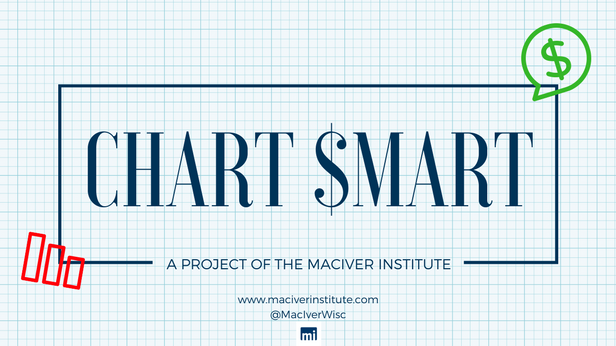
While the world waits for Gov. Walker and leadership to reach an agreement on transportation taxes, education spending, tax cuts and bonding levels, we continue our budget analysis with a deeper look at the education budget proposed by Gov. Walker
MacIver News Service | July 5, 2017
Welcome back to ChartSmart! It’s been a few weeks since the Joint Committee on Finance has met to deliberate on the state budget, but that doesn’t mean it’s been quiet here at the Capitol. If you have been watching the news lately or, better yet, following the up-to-the-minute updates from your hard-working staff at the MacIver News Service, you know that the 2017-2019 state budget seems to be stuck in neutral and going nowhere fast.
Governor Scott Walker and Assembly Speaker Robin Vos (R-Rochester) have been at odds for months over transportation funding and the Speaker’s desire to raise the gas tax or vehicle registration fee. But just last week, after the Governor met with Speaker Vos and Senate Majority Leader Scott Fitzgerald (R-Juneau), there seemed to be momentum building for a new tax on trucks and a solution to the impasse. Just when you thought the tax increase was greased and the budget might start moving on down the road again, a group of five senators, enough to block the proposal in the Senate, came out publicly in opposition to the tax and all hope was lost. Back to the starting line.
We cannot be sure when Speaker Vos and Majority Leader Fitzgerald will reach an agreement or even when the Finance Committee will meet again to finish their work on Walker’s budget proposal. When they finally do reach a deal, chances are it will move quickly through the Finance Committee and both houses of the legislature. So quickly, that we want to publish the rest of our analysis of Gov. Walker’s proposal and the different legislative offerings.
Today, we’ll dive back into the education debate by taking a look at proposed spending levels and pupil membership in Gov. Scott Walker’s Department of Public Instruction budget.
Since JFC last met, lawmakers have introduced not one, but two separate K-12 funding plans. The Assembly Republican caucus put forth a plan that focuses on low-revenue districts, slightly cutting back on Walker’s proposed increases to categorical per pupil aid to get there. That proposal would cut overall spending by about $70 million compared to the governor, but would allow about half of the state’s 424 school districts to raise property taxes by up to $92.2 million. Check out a full analysis on that plan here.
On the other side of the aisle, Democrats on JFC introduced their own plan that would spend nearly $730 million more than Walker’s proposal, eliminating the school levy and first dollar tax credits entirely and sending that money through the general school aids formula. The plan maintains Walker’s level of funding for categorical per pupil aid, but hikes spending almost everywhere else and opens the door to property increases down the line. Read more right here.
Meanwhile, Walker’s plan – which increases state support for K-12 education by $649 million over current spending levels – has been lauded by school leaders across the state. The proposal would increase general school aids by $73 million, increase categorical aids by $200 per pupil in the first year and by another $204 per pupil in the second, and would increase the school levy tax credit by $87 million.
Walker’s plan would also increase sparsity aid – a pot of money devoted to rural districts with fewer students who live further apart – and create a second tier of funding to help schools that have grown too big to receive sparsity aid. For more details, read our original analysis here.
As always, check out the MacIver Institute and MacIver News Service on Twitter for more up-to-the-minute updates. As the budget debate continues on, we’ll be here providing you, the taxpayer, with the details you need.



